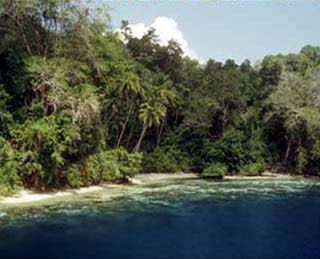
Tanjung Karang Beach is one of the tourism object which is located in Donggala District, Central Sulawesi, Indonesia. This beach is located about 37 km northeast of Palu City. This beach visited by many  local tourists, especially those in the vicinity of Palu city. Along the journey from the City of Palu, we will found coastal scenery of the beautiful Bay of Palu on the right side road. After arrive in Donggala, visitors will find a peaceful atmosphere with a few buildings still use the Dutch architecture.
local tourists, especially those in the vicinity of Palu city. Along the journey from the City of Palu, we will found coastal scenery of the beautiful Bay of Palu on the right side road. After arrive in Donggala, visitors will find a peaceful atmosphere with a few buildings still use the Dutch architecture.
Read More..
 local tourists, especially those in the vicinity of Palu city. Along the journey from the City of Palu, we will found coastal scenery of the beautiful Bay of Palu on the right side road. After arrive in Donggala, visitors will find a peaceful atmosphere with a few buildings still use the Dutch architecture.
local tourists, especially those in the vicinity of Palu city. Along the journey from the City of Palu, we will found coastal scenery of the beautiful Bay of Palu on the right side road. After arrive in Donggala, visitors will find a peaceful atmosphere with a few buildings still use the Dutch architecture. To reach Tanjung Karang Beach, visitors  should proceed about 3 km journey again. From the path towards Tanjung Karang Beach, visitors will be able to see the Donggala City, complete with its atmosphere of the port. Tanjung Karang beach have white sand that perfect for swim and sunbathing. Visitors can also do snorkeling and diving. Marine parks are still natural, so it can be found coral and the beautiful ornamental fish.
should proceed about 3 km journey again. From the path towards Tanjung Karang Beach, visitors will be able to see the Donggala City, complete with its atmosphere of the port. Tanjung Karang beach have white sand that perfect for swim and sunbathing. Visitors can also do snorkeling and diving. Marine parks are still natural, so it can be found coral and the beautiful ornamental fish.
 should proceed about 3 km journey again. From the path towards Tanjung Karang Beach, visitors will be able to see the Donggala City, complete with its atmosphere of the port. Tanjung Karang beach have white sand that perfect for swim and sunbathing. Visitors can also do snorkeling and diving. Marine parks are still natural, so it can be found coral and the beautiful ornamental fish.
should proceed about 3 km journey again. From the path towards Tanjung Karang Beach, visitors will be able to see the Donggala City, complete with its atmosphere of the port. Tanjung Karang beach have white sand that perfect for swim and sunbathing. Visitors can also do snorkeling and diving. Marine parks are still natural, so it can be found coral and the beautiful ornamental fish.




























